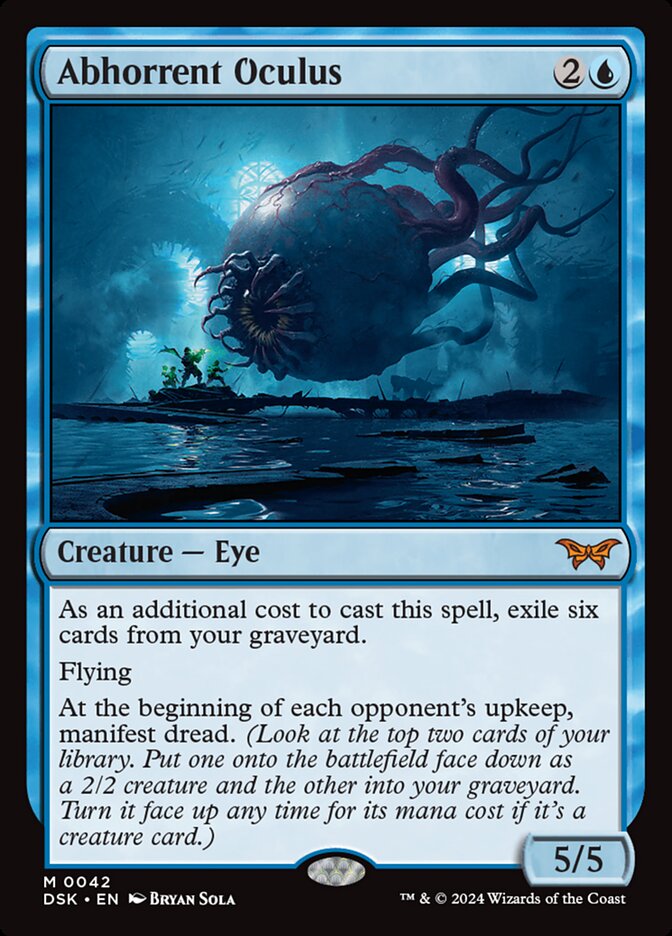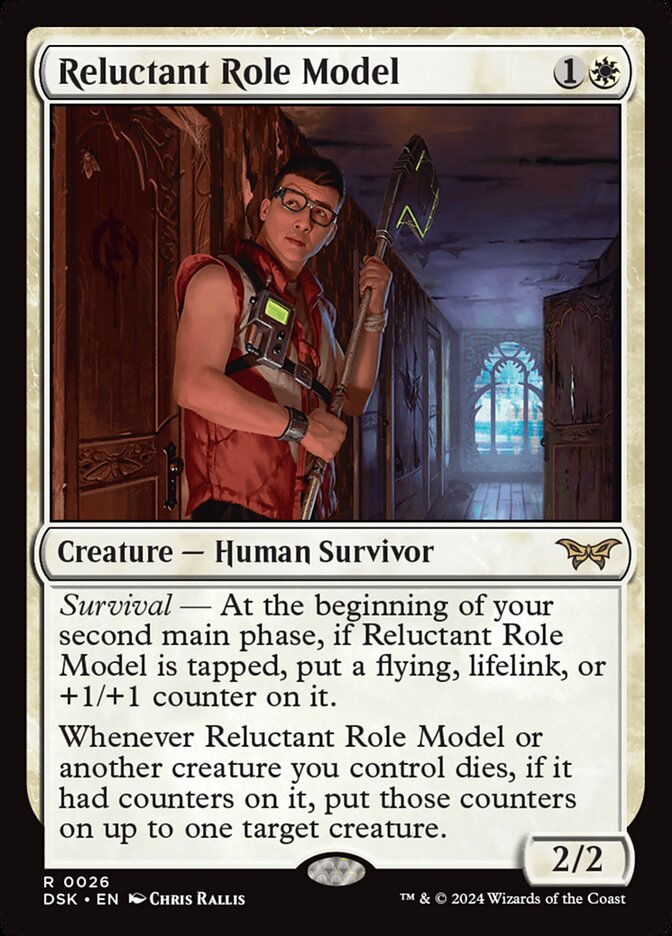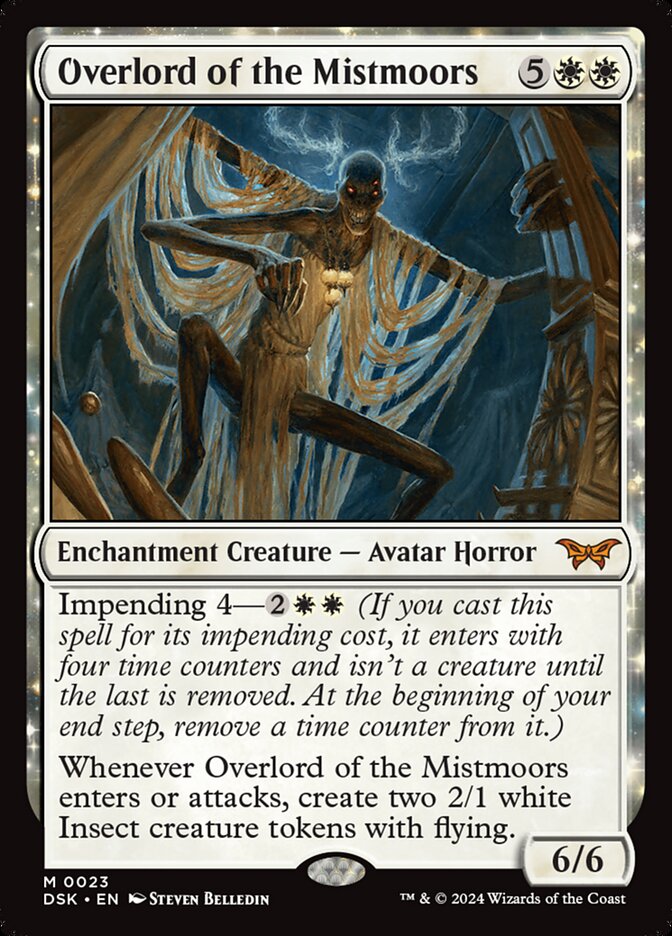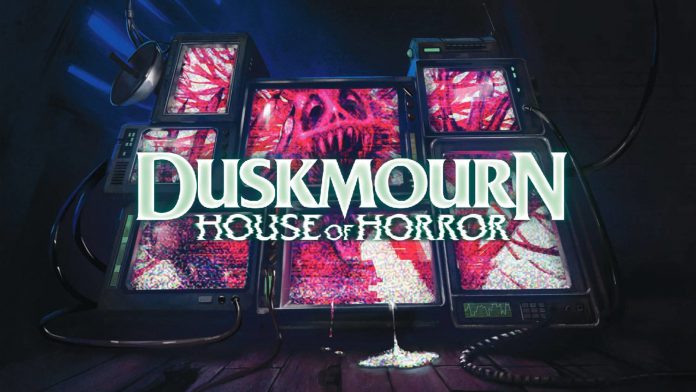Magic’s newest expansion takes us to the newly introduced plane of Duskmourn, a plane comprised entirely of a living haunted mansion that thrives on the fear of its denizens. A new set means new mechanics, and we’ve got some good ones. In this article we’ll talk about the mechanics and offer some thoughts on what they mean for Commander and other formats and how they’ll play.
Duskmourn will release to Magic the Gathering Online on September 24, 2024, and to the tabletop on September 27.
Rooms

Rooms are a new enchantment subtype that function somewhat similarly to existing split cards. Each half is considered a door, and you pick one to ‘unlock’ by casting it. Once it is on the battlefield, as a sorcery you may then pay the ‘locked’ half’s mana cost to unlock it and get its corresponding effects. If it enters without the cost being paid for either side it is fully locked, and both halves must be paid for if you want them to be active. While it is on the battlefield it has the mana cost of its unlocked doors, and in your library, graveyard, or hand it has the combined cost and names of both halves.
FromTheShire: This is both quite a departure from existing cards and also very familiar. There are some edge cases that may be confusing for newer players but for the most part these function how you think they do, and being able to choose what you want when you want it is great. Even better, later in the game you can get the second benefit as well, and we are seeing some very powerful payoffs.
BPhillipYork: I like this mechanic. Really anything that helps resolve some of the issues with cards only being good at certain stages of the game. I’m not as sure I care about the kind of “ooh it’s a locked room” mystery sort of vibe. Having a card that comes in early and does something useful and can be expanded on later, that’s neat. Or if it’s late game that allows you to start with the more costly effect. It’s also not counterable, as far as I can tell, since you’re not casting something or even really using an ability, it’s more like a passive part of the game state, like morph or ninjitsu.
FromTheShire: Correct, unlocking a room does not use the stack and can’t be responded to, like morph.
Manifest Dread

Manifest dread builds off of the existing manifest mechanic. Rather than simply putting the top card onto the battlefield as a 2/2, you get to look at the top 2 cards and pick one to manifest and one to put into the graveyard.
FromTheShire: I have always liked face down creatures since the days of morph so it’s nice to see them continue to return. It’s a little unfortunate that some of these different but the same abilities key off of different words, but there are still plenty of things that simply care about a creature being turned face up or the like. There’s still the same level of gamesmanship and hidden info with the bonus of being able to dig an extra card deeper looking for a creature and fill your yard at the same time.
BPhillipYork: This is a really nice twist on manifest, which was a bit of a clunky mechanic, and could be a bit of a self own. The ability to pick which of two cards to manifest is a huge seller for me. I tend to have an overactive loss aversion about things getting permanently lost to me, like an enchantment that ends up manifested and can no longer really be accessed. Truth be told I ran Pull from Eternity for way too long, before I finally convinced myself that if my deck only runs a certain win con and it gets exiled, I lose that game, and I’m better off accepting that then obsessing over having some way to get it back. The fact you generate a mill on top of the manifestation is really quite useful. This gives you a creature, which is perfect sacrifice fodder to reanimate something that you’ve just milled into your yard. Hopefully this becomes an evergreen or deciduous mechanic.
Survival

Survival is a simple mechanic that checks if the creature with it is tapped at the beginning of your second main phase, and if so you get some effect. It doesn’t matter how it got that way, so look for ways to tap your creatures that don’t involve combat for your smaller creatures!
FromTheShire: This seems solid. It’s a little bit win more but if you’re an aggressive deck on the play trying to close out a game these bonuses can really help. In Commander there are a wider array of ways to safely tap your creatures like convoking, it’s just a question if there are enough cards with big enough effects to make that a consistent part of your game plan.
BPhillipYork: Nice to see a pay off for using the creature. For Commander this is perfect, many games are stalemates or games with little progress because players don’t want to attack or lose creatures. This way you have some real incentive, other than dealing damage (which actually should be plenty of incentive, but that’s a whole playstyle digression), to get swinging. For non-commander I worry this mechanic just pumps up aggro even more and makes games even more about getting to that turn 3 or 4 reset. There’s also a variety of ways to tap creatures down that doesn’t require attacking, Opposition for example, which sort of skirts the whole issue. This is a decent mechanic in my opinion, with the potential to be important depending on what kinds of cards it’s on, if it’s just tons of weenies, probably not very meaningful.
Eerie

Eerie is another simple mechanic, which triggers whenever an enchantment you control enters the battlefield or whenever you have unlocked both halves of a Room.
FromTheShire: These very nicely trigger in any standard enchantment based deck, which immediately makes them playable in Commander. If you ever happen to get the Room trigger that’s neat, but Enchantress is already a widely played archetype and this adds further tools.
BPhillipYork: Well this is awesome for enchantress decks, to finally have this something like a keyword. I’m guessing this will stick around, enchantments seem like they’ve been getting increasing focus in recent years, as ways to push the play envelope. I’m not sure how often rooms will actually get unlocked, though it seems this will trigger eerie twice, when you cast a room enchantment it will enter and then unlock, which is pretty nice.
Impending

Impending lets you cast spells early for an alternative cost, somewhat similar to suspend. Unlike suspend, the card enters immediately but is not a creature until the time counters are removed from it. This means you get the enters the battlefield trigger now, and then a further payoff in a few turns.
FromTheShire: I really like this as well, you get an immediate effect and then it can hang out dodging removal for a few turns. In Commander you can also have ways to manipulate counters in general or time counters specifically which gives these a further boost.
BPhillipYork: Okay so it’s suspend… sort of? It’s a bit of a strange thing, though I think it has the potential for time counter haymakers to be less totally devastating and thus require a response, and to give you something useful now. In part because suspend is so slow the cards had to be really powerful to be worth playing, which in turn necessitated your opponents potentially taking you out of the game before your massive telegraphed whatever arrived. This way you get something immediately, and it can be interacted with in a limited way, it does something small, and then probably generates some value along the way. So far it looks like all the impending cards form a cycle that all does an enter or attack trigger, and then something color themed, which is kind of blah, but hopefully they’ll expand the mechanic to be more interesting and flavorful. Also you can just impend them out then flicker, getting 2 ETBs and removing the counters, which is potentially some interesting tech.
Next Time: The Set’s Multicolor Cards
That wraps up our look at the mechanics of Duskmourn: House of Horror. We’ll be back later to look at the most noteworthy cards in the set, starting with the multicolor cards in the main set, then in the following articles we’ll cover the monocolor and colorless cards before moving on to the set’s Commander decks.
Have any questions or feedback? Drop us a note in the comments below or email us at contact@goonhammer.com. Want articles like this linked in your inbox every Monday morning? Sign up for our newsletter. And don’t forget that you can support us on Patreon for backer rewards like early video content, Administratum access, an ad-free experience on our website, and more.


